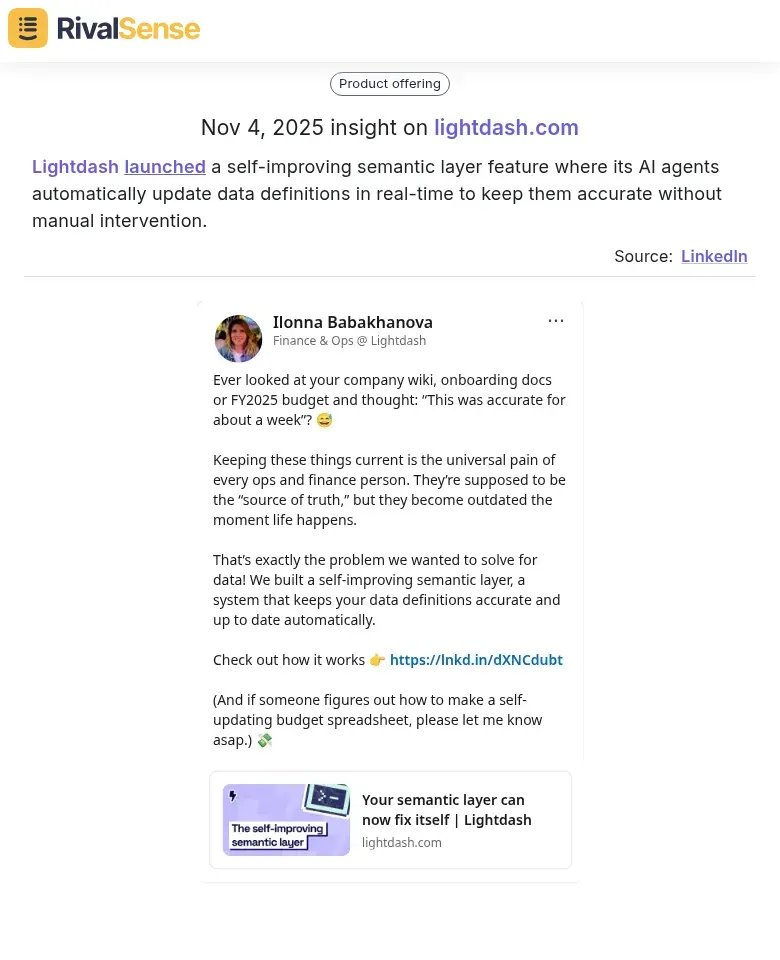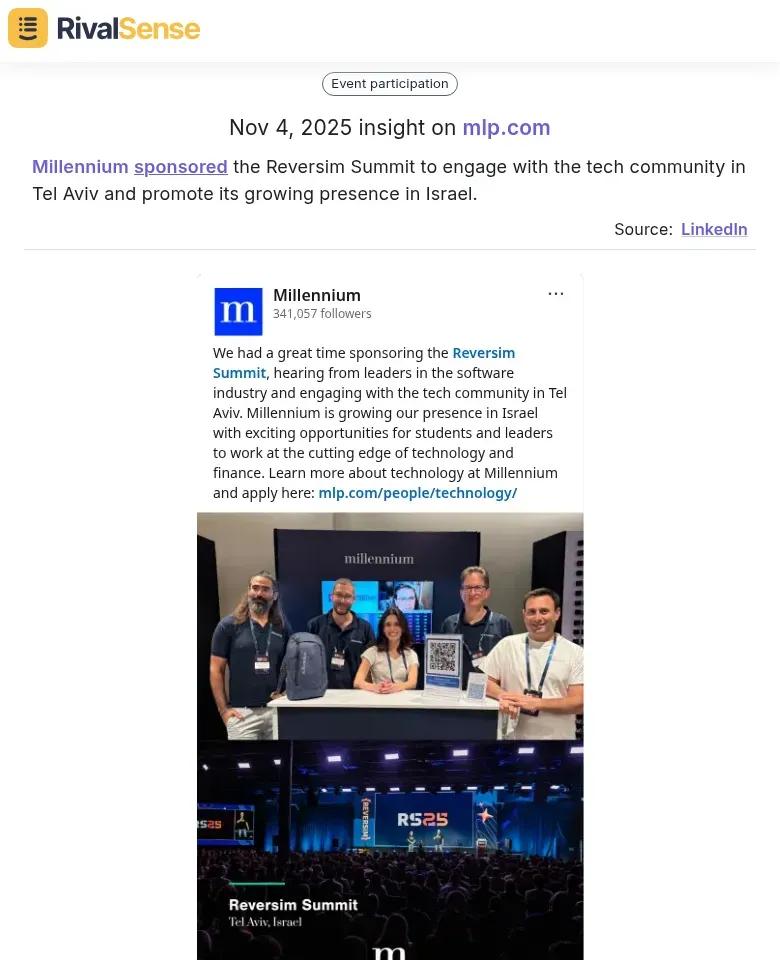Data-Driven Key Account Tracking for Healthcare IT: A Strategic Guide to Patient Management
Data-driven key account tracking is revolutionizing how healthcare IT organizations manage patient relationships and drive growth. By leveraging comprehensive data analysis, businesses can move beyond reactive measures to proactively secure and expand strategic accounts. In patient management, this approach transforms client interactions by focusing on outcomes, utilization patterns, and satisfaction metrics, leading to tangible benefits like 15-25% higher patient retention and 30% more stable revenue streams.
Key differences from traditional monitoring:
- Focuses on client health metrics rather than just competitor moves
- Uses predictive analytics to anticipate patient management challenges
- Tracks implementation success and adoption rates across departments
Practical steps to implement:
- 🗺️ Map key decision-makers and influencers within each account
- 📊 Establish baseline metrics for patient engagement and outcomes
- ⚠️ Set up automated alerts for usage drops or satisfaction declines
- 🔍 Conduct quarterly business reviews with data-backed insights
- 🤝 Create shared success metrics with clients
💡 Tip: Start with your 3-5 most strategic accounts and expand as you refine your tracking methodology. Correlate specific IT features with improved patient outcomes to build undeniable value propositions for renewal and expansion.
Essential Data Sources for Healthcare Key Account Intelligence
Accurate data integration is crucial for effective key account tracking in healthcare IT. By tapping into diverse data sources, you can gain a holistic view of account health and identify actionable opportunities. Start with Electronic Health Records (EHR) and patient data: integrate systems to monitor patient volumes, treatment outcomes, and utilization patterns. For example, track EHR adoption rates and data interoperability across accounts to pinpoint upsell potential.
Next, leverage clinical trial metrics: analyze enrollment numbers, protocol adherence, and trial success rates to assess account stability. Use this data to flag at-risk accounts early and intervene proactively. Finally, gather customer feedback through surveys, NPS scores, and support ticket analysis to address pain points and strengthen relationships.
Practical steps:
- ✅ Audit EHR integration capabilities
- 📈 Set up dashboards for real-time trial metrics
- 🔄 Automate feedback collection with follow-up actions
This data-driven approach ensures informed decisions for sustained account growth and improved patient management.
Competitor Intelligence Integration in Healthcare Account Strategy
Integrating competitor intelligence into your healthcare IT account strategy is essential for staying ahead in a dynamic market. By systematically tracking rivals' activities, you can anticipate moves, refine your value proposition, and protect key accounts. Start by monitoring competitors' market positioning through thought leadership content, conference presentations, and client case studies to understand their messaging and target segments.
Analyze pricing strategies and service offerings by reviewing public pricing pages, RFP responses, and customer testimonials. Look for tiered pricing models or bundled services that appeal to specific healthcare verticals. Use tools like RivalSense to automate tracking of competitor website updates, feature launches, and pricing changes, ensuring you never miss a critical update.
Identify competitive threats and opportunities with this checklist:
- 📰 Monitor competitor blogs, social media, and industry reports weekly
- 💬 Engage with their customers on forums to uncover pain points
- 📋 Track regulatory changes they adapt to, revealing strategic shifts
By embedding these insights, you can make proactive, data-driven decisions to secure and grow accounts.
Real-World Competitor Insights from RivalSense
Real-world competitor insights provide actionable intelligence that can shape your business strategy and keep you competitive. Tools like RivalSense automate the tracking of key activities, delivering weekly reports that highlight product launches, event participations, and management changes. Here are examples of insights uncovered by RivalSense, each demonstrating strategic value:
🚀 Product Innovation Insight: Lightdash launched a self-improving semantic layer feature where its AI agents automatically update data definitions in real-time to keep them accurate without manual intervention.

Why it's valuable: Tracking product launches helps you stay ahead of technology trends, identify gaps in your offerings, and anticipate market shifts that could impact your accounts.
🤝 Event Participation Insight: Millennium sponsored the Reversim Summit to engage with the tech community in Tel Aviv and promote its growing presence in Israel.

Why it's valuable: Monitoring event sponsorships reveals competitor marketing strategies and community engagement efforts, enabling you to plan your own presence and identify partnership opportunities.
👥 Management Change Insight: Shama Barday joined OneTrust as Vice President and Associate General Counsel in the United States, previously unspecified.

Why it's valuable: Keeping an eye on management changes can signal strategic shifts, new focus areas, or potential disruptions, allowing you to adapt your account strategies accordingly.
Implementation Framework for Healthcare Key Account Tracking
Implementing a structured framework for data-driven key account tracking ensures consistency and effectiveness in healthcare IT patient management. Begin with account segmentation and prioritization: categorize accounts by revenue potential, strategic value, and patient volume using a weighted scoring model. For instance, prioritize large hospital systems with high patient throughput and interoperability needs to maximize impact.
Next, define KPIs for account health monitoring: track metrics like system uptime, user adoption rates, patient data accuracy, and support ticket resolution times. Set benchmarks and alert thresholds to enable proactive interventions and prevent issues from escalating. Finally, create automated tracking systems for real-time intelligence by integrating APIs from EHR platforms, CRM systems, and usage analytics tools.
Practical tips for success:
- 👥 Establish a cross-functional team including IT, sales, and clinical staff
- 📅 Conduct quarterly account reviews to assess performance
- 🔮 Leverage predictive analytics to forecast churn risks and opportunities
This framework supports continuous optimization and strengthens client relationships through data-driven insights.
Strategic Decision-Making with Account and Competitor Data
Strategic decision-making in healthcare IT patient management thrives on the integration of account and competitor data. By combining internal metrics with external intelligence, you can allocate resources effectively and position your offerings for maximum impact. For example, prioritize accounts with high growth potential by analyzing patient volume trends, revenue data, and engagement metrics—if an account shows a 20% increase in patient admissions, invest in tailored solutions like telehealth integrations.
Leverage competitive intelligence to differentiate your platform: track competitors' product updates, pricing changes, and client feedback to identify gaps. If a rival lacks robust data analytics, emphasize your platform's predictive insights in marketing to secure deals in competitive bids.
Develop proactive account growth strategies with these steps:
- 📋 Conduct quarterly account reviews using dashboards that highlight performance metrics and competitor activity
- 🎯 Create action plans based on risk-reward analyses—e.g., upsell to accounts with low churn risk
- 💡 Engage clients with personalized insights, like benchmarking reports against peers
📝 Checklist for informed decisions:
- Assess account health scores regularly
- Track competitor moves weekly
- Align sales teams with data-driven goals
This approach ensures your investments are informed and your growth is sustained in a dynamic market.
Measuring Success and Continuous Improvement
Measuring success in healthcare IT key account management requires a balanced focus on financial and clinical outcomes to drive continuous improvement. Start by calculating ROI through metrics like revenue growth per account, cost savings from streamlined workflows, and patient retention rates. For instance, if your patient management system reduces administrative time by 30%, translate that into tangible billable hours saved to demonstrate value.
Monitor patient outcomes using key indicators: readmission rates, treatment adherence scores, and patient-reported outcome measures (PROMs). Track satisfaction through Net Promoter Score (NPS) and post-discharge surveys to ensure client needs are met. Practical tip: Create a dashboard with quarterly reviews of these metrics to maintain visibility and accountability.
Implement continuous improvement through structured feedback loops:
- 📅 Monthly stakeholder meetings with clinicians, administrators, and patients
- 🔄 Quarterly performance reviews using PDSA (Plan-Do-Study-Act) cycles
- ⚡ Real-time incident reporting systems for immediate issue resolution
✅ Checklist for optimization:
- Track revenue impact vs. implementation costs
- Monitor patient satisfaction and clinical outcomes quarterly
- Gather feedback from all stakeholder groups
- Use data to refine account strategies iteratively
- Document lessons learned for future initiatives
By consistently measuring and refining your approach, you can enhance account performance and achieve long-term success.
To streamline your competitor tracking and gain deep insights like the examples above, try RivalSense for free at https://rivalsense.co/. Get your first competitor report today and start making data-driven decisions with confidence!
📚 Read more
👉 How Vanta's NBA Partnership Revealed Key Expansion Strategy
👉 Optimize Competitor Insights from Website Changes for Strategic Advantage
👉 How to Build a Key Account Management Process Flow for Tech
👉 How Real-Time Competitor Alerts Unlock Media and Content Insights
👉 How to Monitor Competitor Leadership Changes for Strategic Insights
